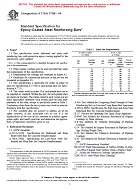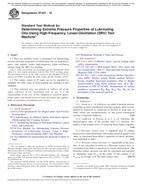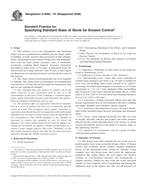1.1 This test method describes the procedures for measuring the soluble and bound cations as well as the cation exchange capacity (CEC) of fine-grained inorganic soils. Clay minerals in fine-grained soils carry a negative surface charge that is balanced by bound cations near the mineral surface. These bound cations can be exchanged by other cations in the pore water, which are referred to as soluble cations. The cation exchange capacity is a measure of the negative surface charge on the mineral surface. The CEC generally is satisfied by calcium (Ca), sodium (Na), magnesium (Mg), and potassium (K), although other cations may be present depending on the environment in which the soil exists. This test method was developed from concepts described previously in Lavkulich (1981) (1) and Rhoades (1982) (2). In soils with appreciable gypsum or calcite, dissolution of these minerals will release Ca in solution that may affect the measurement.
1.2 In this test method, the soluble salts from the mineral surface are washed off with de-ionized water and then the concentration of soluble salts within the extract is measured. The bound cations of the clay are measured by using a solution containing an index ion that forces the existing cations in the bound layer into solution. The total concentrations of bound and soluble cations in this solution are measured. The CEC is measured by displacing the index ion with another salt solution and measuring the amount of the displaced index ion.
1.3 This standard does not purport to address all of the safety concerns, if any, associated with its use. It is the responsibility of the user of this standard to establish appropriate safety and health practices and determine the applicability of regulatory limitations prior to use.
1.4 All observed and calculated values shall conform to the guide for significant digits and rounding established in Practice D6026. The procedures in Practice D6026 that are used to specify how data are collected, recorded, and calculated are regarded as the industry standard. In addition, they are representative of the significant digits that should generally be retained. The procedures do not consider material variation, purpose for obtaining the data, special purpose studies, or any considerations for the objectives of the user. Increasing or reducing the significant digits of reported data to be commensurate with these considerations is common practice. Consideration of the significant digits to be used in analysis methods for engineering design is beyond the scope of this standard.
1.5 The values stated in SI units are to be regarded as the standard, unless other units are specifically given.
Product Details
- Published:
- 07/01/2010
- Number of Pages:
- 5
- File Size:
- 1 file , 120 KB


